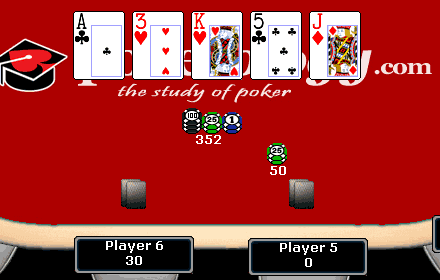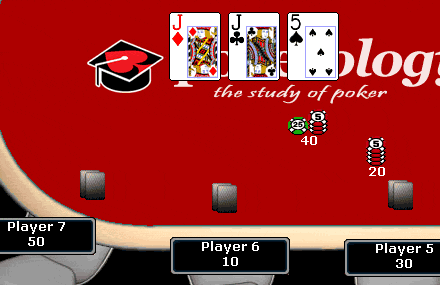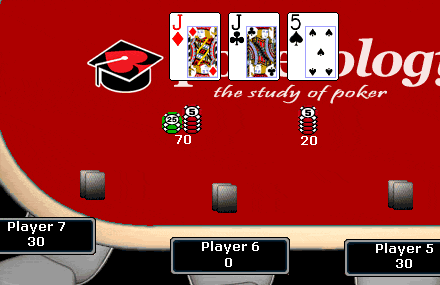
Betting Basics of Poker All-in Wagers & Side-Pots Rules
In our lesson on the three main betting variations of poker, we used an example where a player in a no-limit game could bet far more than anyone else at the table, provided the player had such an amount. Poker is always played at table stakes, and this means you can only wager the amount of money you have in front of you when the hand begins. It is quite common for a player to run out of money during a hand. If you have more money than another player, it doesn’t mean you can bet them out of the pot because they can’t afford to call your bet. Otherwise the poker player with the most money would always win if they bet all their chips, and it wouldn’t be a very enjoyable game.
All-in Bets
When a player puts all their chips into the pot they are said to be “all-in”. The important thing to know is that a player can never bet out of a pot because they always have the option to call for all of their chips. For example, a player with $50 goes all-in, and everyone folds apart from a player who only has $30 left:
Figure 1

This player cannot match the $50 bet, but they can also go all-in for their last $30. When nobody else is involved, the first player would get back the unmatched $20 bet (i.e. their bet is $30 rather than $50). This is shown in figure 2, below:
Figure 2

In this example the shorter-stack wins the pot, but the surplus $20 is returned to player 5.
The whole point of this is that players can take back any extra money when another player is all-in for less, when nobody else has called.
Side Pots
Things get more complex when more than two players remain in a poker hand. If one player goes all-in, a side pot is created for the other active players. The all-in player can only win the main pot and is excluded from any further betting.
Example (see Figure 3):
Three players remain. Two have $50 each, and the third has $10. The pot already contains $40 from earlier rounds. Player 5 now bets $20.
Figure 3

Three players are left — two with $50, one with $10. There’s $40 in the pot. Player 5 bets $20. Player 6 can’t match it, so they go all-in with their last $10. Player 7 can call the $20 or raise.
If Player 6 goes all-in and Player 7 calls the full $20, then a side pot is created (as shown in Figure 4 below).
Figure 4

The main pot now holds $70 — that’s the original $40 plus $10 each from Players 5, 6, and 7. This is the only pot Player 6 can win since they’re all-in.
A separate side pot of $20 is formed from the extra $10 each contributed by Players 5 and 7. Only those two can win this pot.
If Player 6 wins at showdown, they take the main pot only. The side pot is then decided between Players 5 and 7. Any further bets go into this side pot, not the main one.
Conclusion
This lesson covered key concepts that may feel daunting to beginners, but with regular play, these betting principles become intuitive. Side pots are a common feature in poker—especially in multi-way hands—whether you’re playing limit, pot-limit, or no-limit formats.
These scenarios arise because players bring different chip stacks to the table. Those with fewer chips than others can only contest the portion of the pot they’ve matched. The essential rule is simple: no one can be pushed out of a hand just because they can’t call a larger bet. As long as you have chips to bet, you’re still in the game.